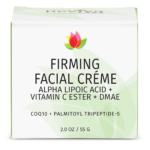Kaolin
Kaolin is a particular kind of clay, actually a naturally occurring hydrous aluminum silicate. Most of us associate clay with a murky blackish-green color, but this one is actually a light, white powder (i.e., a very fine natural clay originally from Mt. Kaolin in China, hence the name). It is so light that you will find it in many cosmetic products, where it is used to give more opacity and whiteness.
This type of clay has great absorbing properties, like the more active bentonite, but it is less drying and less aggressive which makes it ideal for those who have dry and sensitive skin.
Kaolinite (/ˈkeɪ.ələˌnaɪt, -lɪ-/ KAY-ə-lə-nyte, -lih-) is a clay mineral, with the chemical composition Al2Si2O5(OH)4. It is an important industrial mineral. It is a layered silicate mineral, with one tetrahedral sheet of silica (SiO4) linked through oxygen atoms to one octahedral sheet of alumina (AlO6) octahedra. Rocks that are rich in kaolinite are known as kaolin (/ˈkeɪ.əlɪn/) or china clay. Kaolin is occasionally referred to by the antiquated term lithomarge, from the Ancient Greek litho- and Latin marga, meaning 'stone of marl'. Presently the name lithomarge can refer to a compacted, massive form of kaolin.
| Kaolinite | |
|---|---|
 | |
| General | |
| Category | Phyllosilicates Kaolinite-serpentine group |
| Formula (repeating unit) | Al2(OH)4Si2O5 |
| IMA symbol | Kln |
| Strunz classification | 9.ED.05 |
| Crystal system | Triclinic |
| Crystal class | Pedial (1) (same H-M symbol) |
| Space group | P1 |
| Unit cell | a = 5.13 Å, b = 8.89 Å c = 7.25 Å; α = 90° β = 104.5°, γ = 89.8°; Z = 2 |
| Identification | |
| Color | White to cream, sometimes red, blue or brown tints from impurities and pale-yellow; also often stained various hues, tans and browns being common. |
| Crystal habit | Rarely as crystals, thin plates or stacked. More commonly as microscopic pseudohexagonal plates and clusters of plates, aggregated into compact, claylike masses |
| Cleavage | Perfect on {001} |
| Tenacity | Flexible but inelastic |
| Mohs scale hardness | 2–2.5 |
| Luster | Pearly to dull earthy |
| Streak | White |
| Specific gravity | 2.16–2.68 |
| Optical properties | Biaxial (–) |
| Refractive index | nα = 1.553–1.565, nβ = 1.559–1.569, nγ = 1.569–1.570 |
| 2V angle | Measured: 24° to 50°, Calculated: 44° |
| References | |
| Kaolinite | |||||||||||
|---|---|---|---|---|---|---|---|---|---|---|---|
| Traditional Chinese | 高嶺石 | ||||||||||
| Simplified Chinese | 高岭石 | ||||||||||
| Literal meaning | "Gaoling stone" | ||||||||||
| |||||||||||
The name kaolin is derived from Gaoling (Chinese: 高嶺; pinyin: Gāolǐng; lit. 'High Ridge'), a Chinese village near Jingdezhen in southeastern China's Jiangxi Province. The name entered English in 1727 from the French version of the word: kaolin, following François Xavier d'Entrecolles's reports on the making of Jingdezhen porcelain.
Kaolinite has a low shrink–swell capacity and a low cation-exchange capacity (1–15 meq/100 g). It is a soft, earthy, usually white, mineral (dioctahedral phyllosilicate clay), produced by the chemical weathering of aluminium silicate minerals like feldspar. In many parts of the world it is colored pink-orange-red by iron oxide, giving it a distinct rust hue. Lower concentrations yield white, yellow, or light orange colors. Alternating layers are sometimes found, as at Providence Canyon State Park in Georgia, United States. Commercial grades of kaolin are supplied and transported as dry powder, chips, or liquid slurry.









